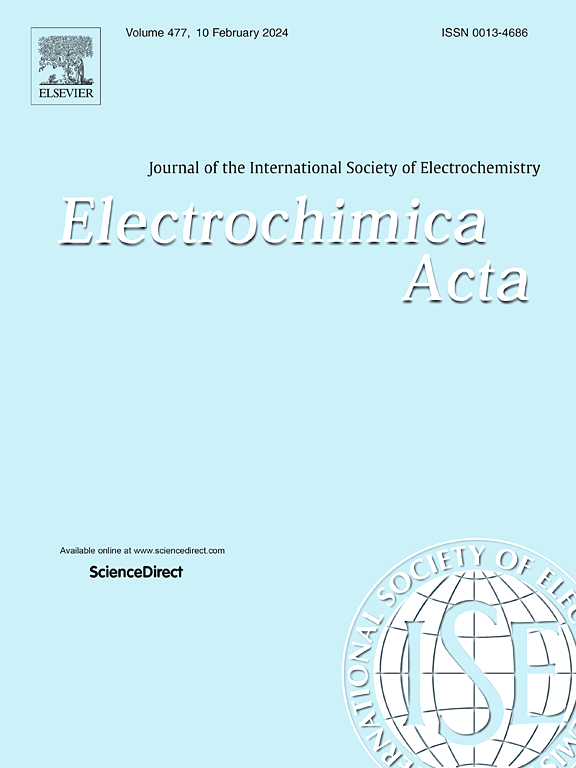Porous Cu9S5 nanonets as an efficient cathode material for high-capacity rechargeable magnesium batteries
IF 5.5
3区 材料科学
Q1 ELECTROCHEMISTRY
引用次数: 0
Abstract
Rechargeable magnesium batteries (RMBs) have garnered special interest as a promising energy-storage technology owing to elemental abundance and high theoretical volumetric capacity of Mg. Their development, however, is still limited owing to the absence of capable cathode materials for any potential applications. Herein, the Cu9S5 nanonets are synthesized by a facile hydrothermal treatment, and then used as a feasible cathode for RMB, which can deliver a high initial discharge specific capacity of 420.1 mAh g–1 at 100 mA g–1, and an impressive reversible capacity of 279.2 mAh g–1 after 48 cycles at 50 mA g–1. This outstanding performance is attributed to the unique net-like nanostructure of Cu9S5, which facilitates the diffusion and reaction kinetics of Mg2+ ions. Moreover, the Mg-storage mechanism containing a two-step conversion reaction was also discussed. The present study will encourage further investigation on the optimization of cathode materials for high-capacity Mg batteries.


多孔Cu9S5纳米片作为高容量可充电镁电池的高效正极材料
可充电镁电池(RMBs)作为一种有前途的储能技术,由于其元素丰度和较高的理论容量而引起了人们的特别关注。然而,由于缺乏任何潜在应用的阴极材料,它们的发展仍然受到限制。本文采用简单的水热处理方法合成Cu9S5纳米片,并将其作为RMB的可行阴极,在100 mA g-1下可提供420.1 mAh g-1的高初始放电比容量,在50 mA g-1下可提供48次循环后的279.2 mAh g-1的可逆容量。这种优异的性能归功于Cu9S5独特的网状纳米结构,有利于Mg2+离子的扩散和反应动力学。此外,还讨论了含两步转化反应的镁储存机理。本研究将鼓励对高容量镁电池正极材料的进一步优化研究。
本文章由计算机程序翻译,如有差异,请以英文原文为准。
求助全文
约1分钟内获得全文
求助全文
来源期刊

Electrochimica Acta
工程技术-电化学
CiteScore
11.30
自引率
6.10%
发文量
1634
审稿时长
41 days
期刊介绍:
Electrochimica Acta is an international journal. It is intended for the publication of both original work and reviews in the field of electrochemistry. Electrochemistry should be interpreted to mean any of the research fields covered by the Divisions of the International Society of Electrochemistry listed below, as well as emerging scientific domains covered by ISE New Topics Committee.
 求助内容:
求助内容: 应助结果提醒方式:
应助结果提醒方式:


